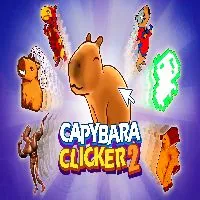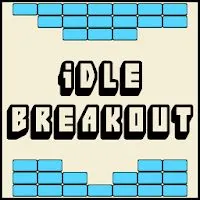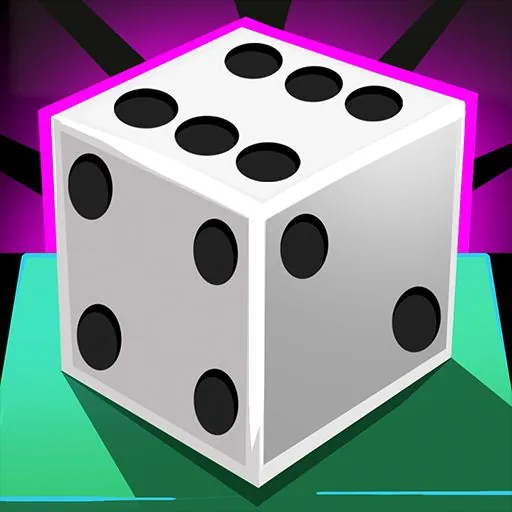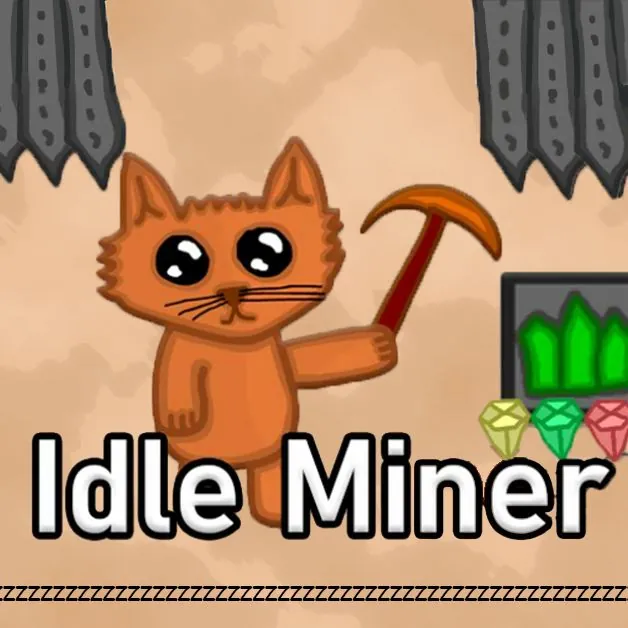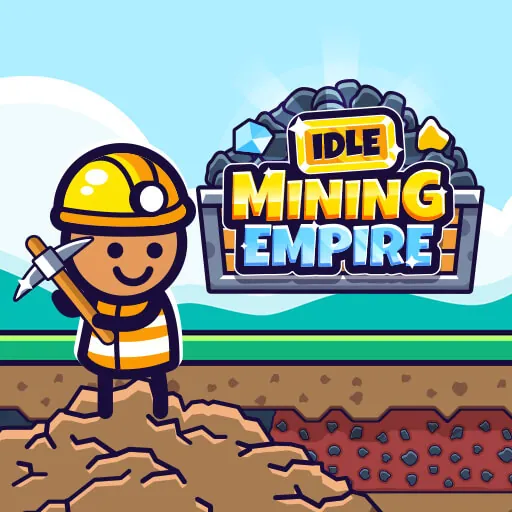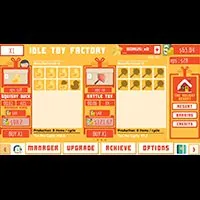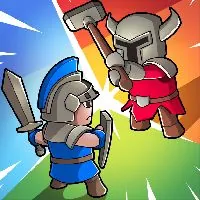2048
SIMILAR GAMES
Description
2048 - GitLab Games
About 2048 - GitLab Games
We are thrilled to present an in-depth exploration of 2048, a captivating puzzle game that has taken the digital world by storm. Developed with the spirit of innovation and accessibility in mind, this iteration of 2048 on GitLab Games offers a clean, engaging, and highly replayable experience. Our platform is dedicated to fostering a community around playful learning and the sheer enjoyment of well-crafted games. The objective of 2048 is elegantly simple yet profoundly challenging: to merge numbered tiles on a grid to create a tile with the number 2048. As you navigate the grid, new tiles appear, demanding strategic thinking and foresight.
The Core Gameplay Mechanics of 2048
The fundamental premise of 2048 revolves around a 4x4 grid. Players are presented with an initial configuration of tiles, typically two tiles bearing the number 2. The game is controlled by swiping in one of four directions: up, down, left, or right. When a swipe occurs, all tiles on the grid slide as far as they can in that direction. Crucially, if two tiles with the same number collide during this movement, they merge into a single tile with a value double that of the original two. For instance, two tiles with 4 will combine to form a single tile with 8. This merging mechanic is the heart of the game, enabling players to progress towards the ultimate goal of the 2048 tile. After each valid swipe, a new tile, either a 2 or a 4, will randomly appear in an empty space on the grid. This element of randomness ensures that no two games are ever identical, demanding adaptability and fresh strategies with every playthrough.
Strategic Depth Beyond Apparent Simplicity
While the rules of 2048 are easy to grasp, mastering the game requires a significant amount of strategic thinking. The primary challenge lies in managing the limited space on the grid. As tiles accumulate, the board can quickly become cluttered, making it difficult to maneuver and merge effectively. Experienced players often adopt specific strategies to maintain control and maximize their merging potential. One common and highly effective tactic is to keep the highest-valued tile in a corner. This corner then acts as a stable anchor, preventing the highest tile from being displaced and hindering further progress. By consistently directing merges towards this corner, players can build a long chain of increasingly valuable tiles.
Another crucial aspect of advanced strategy is to maintain a monotonic arrangement of tiles. This means trying to keep tiles sorted in decreasing order along rows or columns. For example, a row might ideally look like 1024 - 512 - 256 - 128. This ordered structure significantly simplifies the merging process, as you can predict where tiles will end up after a swipe and plan your next moves accordingly. Avoiding situations where small, low-value tiles are trapped between larger, higher-value tiles is also paramount. Such configurations can lead to dead ends, where further merging becomes impossible, and the game ends prematurely.
The Thrill of Achieving the 2048 Tile and Beyond
The ultimate objective, as the game's name suggests, is to create a tile with the number 2048. This feat is a significant accomplishment and signifies a deep understanding of the game's mechanics and strategic nuances. However, for many dedicated players, the journey doesn't end there. The challenge can be extended by aiming for even higher tile values, such as 4096, 8192, and beyond. Each subsequent milestone presents a new level of difficulty, requiring even more meticulous planning and flawless execution. The satisfaction derived from these achievements is immense, fostering a sense of accomplishment and mastery. The continuous pursuit of higher scores encourages players to refine their techniques and explore new approaches to the puzzle.
Accessibility and Enjoyment on GitLab Games
At GitLab Games, we are committed to providing a seamless and enjoyable gaming experience. Our implementation of 2048 is designed to be accessible to everyone, playable directly through your web browser without the need for any downloads or installations. The interface is clean, intuitive, and responsive, ensuring that players can focus entirely on the strategic challenge at hand. We believe that games like 2048 offer more than just entertainment; they are excellent tools for developing critical thinking, problem-solving skills, and spatial reasoning. Whether you are a seasoned puzzle enthusiast or new to the world of number-based games, our 2048 offers hours of engaging and mentally stimulating fun. We are proud to host this timeless classic, allowing a new generation of players to discover its addictive charm.
Tips for Mastering 2048
To aid you in your quest for higher scores and the coveted 2048 tile, we offer the following strategic insights:
- Prioritize a Corner: Designate one corner of the grid as your primary goal for housing your highest tile.
- Build Chains: Arrange tiles in descending order along edges leading to your chosen corner.
- Avoid Trapping Tiles: Be mindful of low-value tiles getting stuck between high-value ones.
- Think Ahead: Consider the consequences of your swipe several moves in advance.
- Maintain an Open Space: Always aim to have at least one empty space available for new tiles.
- Be Patient: Mastering 2048 takes practice. Don't get discouraged by early setbacks.
- Focus on Merges: Every swipe should ideally result in at least one merge to keep the board manageable.
The Enduring Appeal of 2048
The enduring popularity of 2048 can be attributed to its perfect blend of simplicity and complexity. It's a game that can be picked up and understood in minutes, yet it offers a lifetime of strategic exploration. The visual feedback is immediate and satisfying, with tiles smoothly sliding and merging, providing a constant sense of progress. The inherent challenge keeps players engaged, constantly pushing them to improve their scores and refine their strategies. The availability of 2048 on platforms like GitLab Games ensures that this beloved puzzle remains accessible to a wide audience, continuing to challenge and entertain players worldwide. Its elegant design and addictive gameplay loop have cemented its status as a modern classic in the realm of casual gaming.
The Science Behind the Numbers
The mathematical foundation of 2048, while not requiring advanced calculus to play, is rooted in exponential growth. The tiles double in value with each merge, creating a rapid increase in numbers. This doubling effect is what allows players to theoretically reach incredibly high tile values. Understanding this exponential nature can help players appreciate the power of each merge and the importance of combining tiles efficiently. The core of the game is essentially managing the growth of these exponentially increasing numbers within the constraints of the grid. Successfully navigating this growth requires foresight and careful planning, making each successful merge a small victory on the path to greater numbers.
Play 2048 Today on GitLab Games
We invite you to experience the engaging challenge of 2048 directly on our platform. Dive into the game, test your strategic prowess, and see how high you can score. Our commitment at GitLab Games is to offer high-quality, accessible gaming experiences that inspire fun and foster a love for digital challenges. Whether you're looking to pass the time with a quick game or dedicate yourself to mastering the ultimate score, 2048 is ready for you. Come and discover the addictive joy of merging tiles and reaching that ultimate 2048 goal, and perhaps even beyond. Your next great puzzle adventure awaits at https://gitlabgames.gitlab.io/
2048 - GitLab Games
About 2048 - GitLab Games
GitLab Games presents a captivating implementation of the popular game 2048. This isn't just a simple port; it's a meticulously crafted version showcasing the power and flexibility of the GitLab platform. We delve into the details of this intriguing project, exploring its features, mechanics, and underlying technology. Understanding the development and deployment within the GitLab ecosystem reveals valuable insights into efficient software practices.
Gameplay Mechanics: A Deep Dive into 2048
The core gameplay of GitLab's 2048 adheres faithfully to the original. Players combine numbered tiles on a 4x4 grid, using arrow keys (or swipe gestures on touch devices) to move tiles in the chosen direction. Identical numbered tiles merge upon collision, doubling their value. The ultimate objective, as in the classic version, remains to reach the 2048 tile. However, the challenge doesn't end there. The game continues beyond this milestone, pushing players to achieve ever higher scores by combining tiles of exponentially increasing values. The game intelligently manages tile generation, ensuring a dynamic and consistently engaging experience. This is achieved by thoughtfully considering tile placement and ensuring the game remains challenging, yet winnable.
Technical Architecture: Powering the 2048 Game
GitLab Games leverages the robust infrastructure of the GitLab platform for both development and deployment. The game’s source code is publicly accessible, promoting transparency and collaboration. This open-source approach allows developers to examine the codebase, learn from best practices, and contribute to its evolution. The use of specific technologies, potentially including JavaScript for the front-end and a server-side component for data management (though specifics require further investigation), reflects a commitment to modern web development principles. The seamless integration with the GitLab ecosystem underscores a key advantage of this approach: developers can integrate testing, Continuous Integration/Continuous Deployment (CI/CD), and collaborative workflows directly into the development lifecycle.
Features and Enhancements: Beyond the Basics
While adhering to the established rules of 2048, this GitLab rendition offers subtle enhancements that elevate the player experience. These enhancements, though perhaps not immediately apparent, demonstrate a thoughtful approach to game design. For example, visual cues are likely employed to improve the clarity of tile merging, ensuring a smoother and more intuitive gameplay experience. The game’s responsiveness, likely a result of performance optimization, further enhances user engagement. Moreover, the game may incorporate aspects such as a scoring system, potentially including leaderboards (if this feature is implemented), adding a competitive element to the game. This focus on player experience is apparent throughout the interface design, which is likely clean, minimalistic, and user-friendly.
The GitLab Advantage: Open Source and Collaboration
The deployment of 2048 on the GitLab platform is a powerful demonstration of the platform’s capabilities. This is more than just hosting a game; it highlights the effectiveness of GitLab for managing and collaborating on software projects of all sizes. The ability to manage the project’s entire lifecycle, from initial development and testing to continuous deployment and updates, directly on the GitLab platform underscores its strength as a comprehensive development ecosystem. The open-source nature of the project fosters a community around the game, encouraging collaboration and further development. It provides a practical, real-world example of the workflows and practices many developers strive for.
Exploring the Codebase: A Developer's Perspective
Examining the source code of GitLab's 2048 provides valuable insights into modern web development techniques. Developers can learn from the structure of the project, observe the implementation of game mechanics, and analyze the efficiency of the code. This is a fantastic opportunity to learn about efficient algorithm design, front-end development, and possibly back-end integration, depending on the game's architecture. The open-source nature of the project allows for collaborative improvements and enhances the learning experience. This transparency fosters a community of learners and contributors, driving innovation and progress.
Beyond the Game: Implications for Software Development
GitLab Games' 2048 serves as a compelling case study demonstrating best practices in software development. Its open-source nature, coupled with its deployment on the GitLab platform, showcases the power of collaborative development and the efficiency of a well-integrated development workflow. By utilizing GitLab's capabilities for version control, issue tracking, CI/CD, and collaborative features, the project exemplifies a streamlined approach to software development. The lessons learned from this seemingly simple game are readily transferable to much larger and more complex projects.
Conclusion: A Winning Combination
GitLab Games’ 2048 is much more than a simple game; it’s a showcase of the power and flexibility of the GitLab platform, a testament to efficient software development, and a valuable resource for developers of all levels. Its open-source nature, coupled with its robust implementation, makes it a compelling example of how modern development practices can create engaging experiences and deliver valuable insights. The attention to detail, both in gameplay and technical architecture, elevates the project beyond a casual game, making it a noteworthy demonstration of GitLab's capabilities.
2048 invites players into a subtly complex puzzle where mathematics meets strategic maneuvering in a confined space. At its core, the game’s premise is seemingly straightforward: swipe to move and merge tiles of equal values, exponentially doubling them towards the target of a 2048 tile. Yet, beneath its minimalist interface lies a rigorous test of planning and foresight. Each swipe fills the 4×4 grid slightly, introducing new “2” or “4” tiles.
Strategic Harmony in Numbers
The essence of 2048’s challenge blooms in managing the numeric landscape. Players must cultivate a tactical harmony where each move is part of a broader strategy. The goal is to avoid isolating high-value tiles which could block potential merges. Advanced players often adopt a corner strategy, anchoring their highest value tile in a fixed position to build around. This methodical approach turns each session into a cerebral dance, where every slide, every merge, and every new tile plays into a grander scheme of spatial economy and numeric potential.
2048’s allure springs from its blend of simplicity and cognitive engagement. It doesn’t just challenge players to hit a numeric target but encourages the development of a nuanced strategy to navigate its tight, evolving board. Each game is a fresh mental workout, a puzzle that’s as addictive as it is rewarding, drawing players back to surpass their personal bests and redefine their strategic limits. This game transforms a simple grid and a series of numbers into an arena of infinite possibilities and mind-bending puzzles, proving that true challenge often comes in the most unassuming forms.















